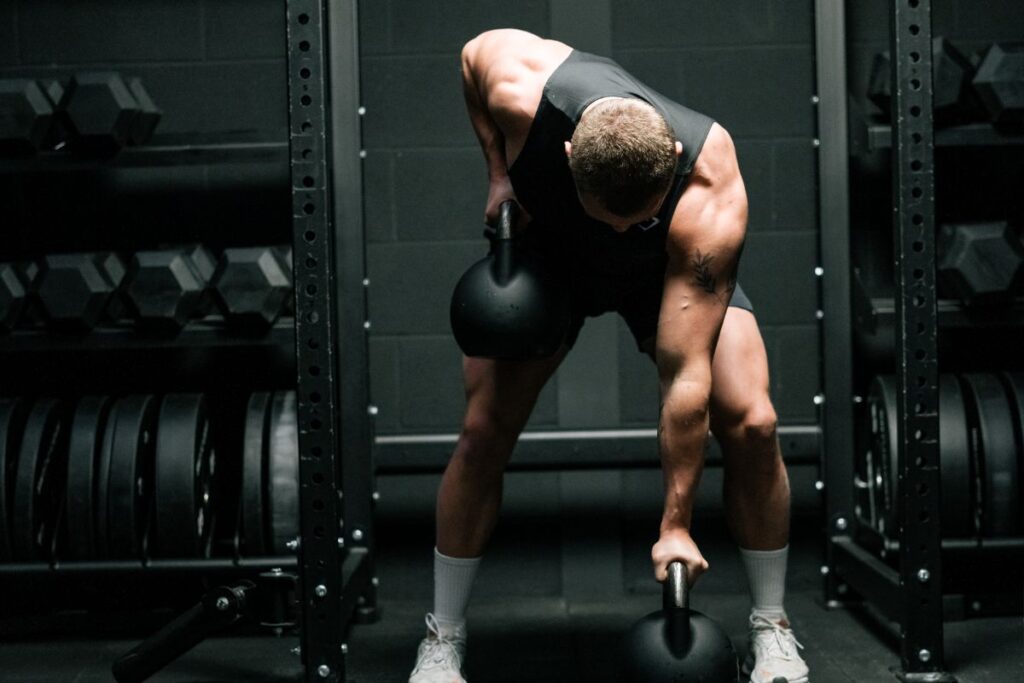Published on 05/03/2025 & Updated on 22/10/2025.
Rugby players at the highest level need to be strong, fast, and conditioned for 80 minutes of brutal physicality.
The Six Nations tournament is the pinnacle of European rugby, where the best rugby players from England, Ireland, Scotland, Wales, France, and Italy battle it out in one of the most intense competitions in sport.
These incredible athletes don’t solely rely on natural talent – they push their bodies to the absolute limit through relentless training, both on and off the field.
So how exactly do they train? If you want to improve your strength, speed, and endurance like a pro rugby player, follow these key principles below.
5 Ways to Train Like a Rugby Player
1. Strength Training for Rugby Power
Rugby is a power sport. Whether it’s a dominant scrum, a big carry, or tackling an opponent, strength is the foundation.
These are the 4 Best Lifts for Rugby:
- Squats: Build lower-body power in the hips, glutes, quads and hamstrings, which are the muscles you use for sprinting, jumping, and driving in contact.
- Deadlifts: To tackle and break through the gain line, you need strong glutes, hamstrings, back, and grip muscles. Deadlifts build these muscles and overall body strength.
- Bench Press: The bench press increases your upper-body force production by training pushing power through the chest, shoulders, and triceps, which are vital for hand-offs, scrummaging, and upper-body dominance in contact.
- Power Cleans: Train your ability to explode from the ground up using hips, legs, traps, and core in a fast, coordinated movement.

Read our blog on the 5 best strength training exercises, written by rugby legend Sam Warburton.
2. Speed & Agility Drills
Raw strength isn’t enough; you need to be explosive and agile.
The best Six Nations players combine raw power with rapid acceleration and razor-sharp footwork, allowing them to dominate in open play and tight spaces alike.
Here’s how they develop these essential skills:
- Plyometrics (Box Jumps, Bounds): Jump training helps players generate the rapid power needed for sprinting, stepping off either foot, and even leaping for high balls. Plyometrics improve force production, making every movement more explosive.
- Cone Drills: Rugby is unpredictable, and players must react instantly to defensive movements, sidestep opponents, and adjust their running lines on the fly. Cone drills improve footwork, agility, and the ability to change direction without losing speed.
- Sled Sprints: Pushing or pulling a weighted sled trains explosive acceleration, mimicking the powerful leg drive needed to break tackles and power through defensive gaps.
Train short bursts of max effort (10-30m sprints) with full recovery to mimic in-game movements.
Ready to start training like a professional rugby player? Discover our online fitness memberships here, including our new Rugby Performance Program, designed for athletes who want to take their game to the next level with elite-standard strength and conditioning.
3. Rugby-Specific Conditioning
Six Nations games are high-intensity. You need to be fit enough to make repeated efforts for 80 minutes.
Unlike steady-state endurance sports, rugby demands repeated high-intensity efforts, rapid recoveries, and the ability to maintain peak performance deep into the second half. This means traditional long-distance jogging won’t cut it. So, instead, you’ll want to focus on:
Interval Runs
Unlike marathon runners, rugby players don’t move at a constant pace—they sprint, stop, change direction, and explode into tackles repeatedly. High-intensity interval training (HIIT) replicates this pattern, improving anaerobic endurance and recovery speed. Try doing a 30s sprint, 30s rest and repeat for 10-15 mins.
Metabolic Circuits
Rugby isn’t all about running; it’s about explosive power, repeated tackles, and the ability to keep going when fatigued.
Metabolic circuits combine strength and conditioning exercises in a way that simulates the stop-start intensity of a match. For example, they include sled pushes, kettlebell swings and everyone’s (not so) favourite… burpees.

4. Nutrition & Recovery for Peak Performance
Elite rugby players don’t just train hard. They also fuel and recover properly to ensure they can perform at their best in every match.
Nutrition provides the energy needed for explosive movements, while recovery strategies allow the body to repair and grow stronger after intense physical exertion. In the Six Nations, where games are brutal and recovery time is short, getting this balance right is crucial.
A Rugby Player’s Diet
A rugby player’s diet is built around supporting muscle growth, energy levels, and recovery. Here’s how:
- High Protein Intake: Include 2g of protein per kg of your body weight for muscle recovery.
- Carbs: Eat carbs, such as oats, rice, pasta and potatoes, to increase your energy.
- Healthy Fats: Add healthy fats, such as avocados, nuts and chia seeds, to your meals to support your joint health and hormone balance.
The Importance of Recovery in Rugby
Rugby is one of the most physically demanding sports, and recovery is just as important as training. Without proper recovery, performance drops, and injury risk increases.
Ensure you’re receiving 7 to 9 hours of sleep every night, focus on mobility work, such as foam rolling and stretching, and use cold water therapy for inflammation.

Want to Train Like a Rugby Player Pro?
At SW7 Academy, we’ve built rugby-specific training programs designed for strength, speed, and conditioning.
Whether you’re playing club rugby or just want to train like an athlete, our Rugby Performance program is built for maximum gains on the pitch.
Start training today with a 7-day free trial of our app. Get access to elite coaching and structured plans to help you dominate the game.
For more tips and insights from our rugby experts, check out our knowledge hub, which covers topics like ‘Personal Trainer Vs Fitness App‘, ‘Top 10 Exercises for Muscle Growth‘ and ‘How Much Protein Do You Need to Build Muscle‘.
